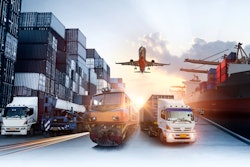
Earlier this year, global e-commerce giant Amazon announced it would be adding a 5% to its U.S. delivery fees in response to rising fuel costs and inflation.
In a statement to its sellers, the company said it had expected a return to normalcy in 2022 as COVID-19 restrictions around the world eased, but fuel prices and inflation have presented further challenges.
Similarly, after the Australian Grand Prix this year, Guenther Steiner, team principal of Haas F1 team said the soaring cost of transporting freight around the world has hit all Formula 1 teams. “It’s going up and every time you speak about it, it’s getting higher,” he said.
E-commerce retailers, manufacturers and logistics providers are feeling the strain from the geopolitical conflict and the aftermath of COVID-19, with some of our clients reporting up to 60% increases in freight costs.
The process of running a tender, taking your freight task to market and creating commercial tension to get the best price possible is probably no longer a productive option in a market where freight providers are operating at or near 100% capacity.
For the past 18 months, we’ve seen freight providers pass on rising costs to their clients, and for the ones who don’t fit neatly within their network – we’re seeing significant price increases.
So, if taking your freight to tender in order to drive cost efficiencies is no longer an option – what can you do?
Firstly, it’s about recognizing that any freight costs savings now have to be generated from inside your operation, and not through your freight provider. But the good news is, the opportunities are vast.
Stop sending air
The first tip for saving costs, is to stop sending air. We still see businesses sending cardboard boxes that are between 15-20% filled with product, and the rest is filled with air or void fill.
This is a major opportunity to drive costs down, as retailers, manufacturers and logistics providers are paying for that empty space in their freight bill.
Luckily, there is now a lot of innovation in the packaging space that can be explored – and a lot of these changes can be made within a matter of months.
We recommend that organizations engage a packaging designer or engineer to explore what flexible packaging processes are available.
After going through this process, we see many clients save upwards of 20% of their freight costs.
Of course, beyond the freight costs savings there are also environmental benefits due to less space being used to transport the same amount of goods.
Consolidate, consolidate, consolidate
Often in online retail, e-commerce providers receive two, three or even four orders a day from the same customer – which tend to be processed independently. Many other sectors also suffer from this same customer behavior without solving the costly freight related implication.
While order processing can take place independently, most businesses don’t have the ability to consolidate the orders into one consignment note and therefore end up sending multiple consignments (multiple basic charges) to the same end consumer on the same day.
There are systems available that can consolidate these orders into one consignment note. By introducing freight and transport management systems, we’ve seen clients save upwards of 30% of the freight cost. These systems also have further benefits in customer service, with simplification in freight account checking and increased accuracy of track and trace.
Route planning and fleet management
We have also seen great success in reducing freight costs through route planning and fleet management software.
By optimizing the load utilization of trucks and minimizing kms travelled, we have been able to demonstrate a 15-25% reduction in freight costs by introducing systems in place that set dynamic routing for delivery processes.
The software can take into account the specifics of a customer address – such as delivery only available on the right side, reverse only into this street, no parking or load zones etc. All of the intricacies that are usually known to individual drivers, can now be digitized and shared to improve route planning and service levels.
Disruption is the new normal
Simply waiting to see if the situation will fix itself is not an option in today’s turbulent climate. This disruption is the new normal and we recommend that our clients take matters into their own hands and look inside their operation to improve the situation and minimize the impact of rising freight costs on their bottom line.
While there is a lot to be done, the good news is a lot of these changes can be deployed with minimal investment providing strong returns in a matter of months.




















